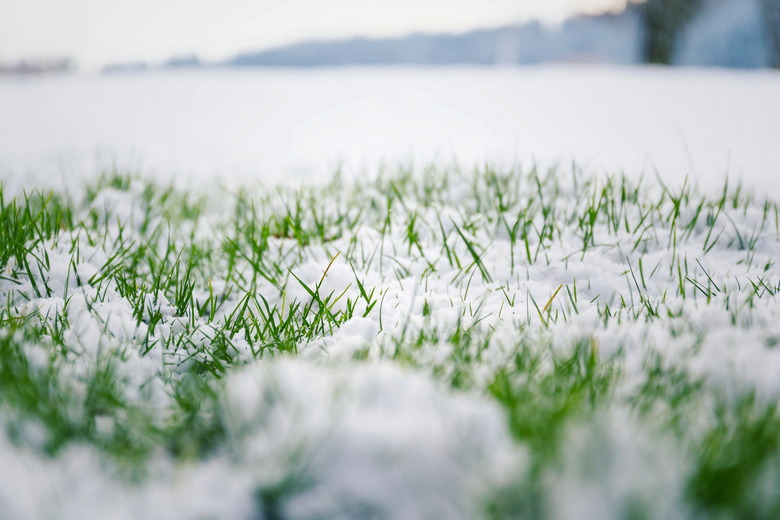Will Frost Kill Grass Seeds?
We may receive a commission on purchases made from links.
When it comes time to seed a new lawn or landscape, you have to take into account many factors, from the types of grass that grow best in your landscape and hardiness zone to the appropriate planting techniques. One of the key considerations involves the effects of the temperature on the seed and the newly sprouted grass plants. Planting at the right time of year to avoid frost and intense heat will help to guarantee a healthy lawn or landscape.
Tip
Grass seed is resilient and won't be killed by frost, but young grass seedlings can die in a frost or a freeze.
Grass Seed Resilience
Grass Seed Resilience
Grass seed itself is relatively temperature resistant. If grasses go to seed in the fall, the seeds lay dormant in the soil all winter and sprout in the spring. This means that the frost does not kill the seeds, but rather just lulls them into a type of hibernation.
However, if the frost is not consistent and the soil in which the grass seed sits goes through a series of freeze/thaw cycles, the moisture from the melting frost will collect around the seeds and can attract rot and mold, which can kill the grass seeds. Therefore a single, solid frost all winter will not kill seeds, but an irregular cycle of freezing and thawing can.
Frost Troubles for Seed
Frost Troubles for Seed
Even though grass seeds themselves are safe from a direct freeze, frost will certainly kill young grass seedlings. The young plants produced from newly germinated grass seeds are extremely susceptible to freezing temperatures.
Their roots are not thick enough or deep enough to avoid freezing when the surface of the soil freezes. When the roots freeze, they cannot take in water, and therefore cannot support the seedlings. The seedlings will die within days of a strong frost.
Cool-Season Grasses
Cool-Season Grasses
The planting time to avoid these killing frosts varies depending on the type of grass you plant. Cool-season grasses grow best in late summer and early fall, when temperatures are gradually working their way down. They thrive in temperatures between 50 and 70 degrees Fahrenheit.
Sow these seeds when daytime temperatures are steady around 75 degrees at the end of summer and beginning of autumn so that they have time to harden off before the first killing frost of the year.
Warm-Season Grasses
Warm-Season Grasses
Warm-season grasses thrive best when soil temperatures remain at 70 degrees Fahrenheit or higher; this cannot be accomplished in the fall, when temperatures are falling. Instead, plant warm-season grasses in later spring or early summer, when the daytime temperatures are steady around 80 degrees Fahrenheit each day. Once these temperatures hit, there is no threat of a late-season frost, and the grasses will have plenty of time to develop strong roots before the most intense summer heat kicks in.
Grass Seed Care
Grass Seed Care
The most important thing to remember when planting either type of grass seed is that moisture is key: The seeds will not germinate if they are not kept consistently moist for at least two to three weeks following planting.
This can be especially tricky with the warm-season grasses, since grass at higher temperatures uses more water. Moisten the seeded area at least twice per day to keep the seed on track for germination.
